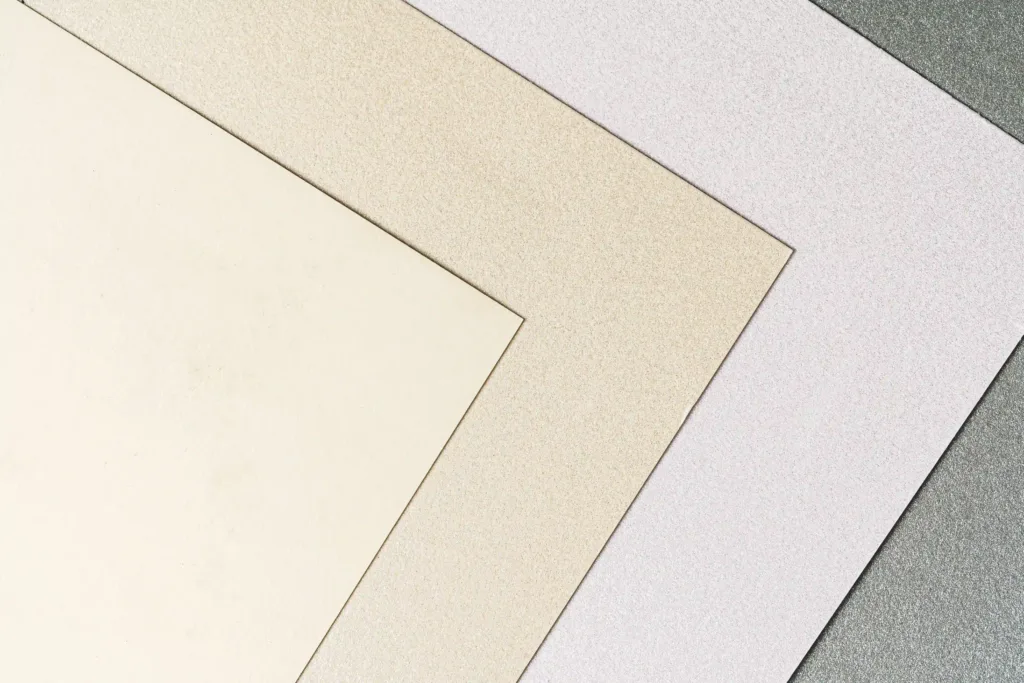Feeling lost in the printing jungle? This comprehensive guide breaks down the offset vs. digital printing dilemma, empowering you to make informed decisions for your next book, magazine, or journal. We’ll explore the pros, cons, and ideal use cases of each method, so you can confidently choose the perfect printing solution for your needs.
Offset printing uses plates and a printing press to produce high-quality, consistent results, making it ideal for large print runs. Digital printing, on the other hand, uses toner or ink to print directly from a digital file, offering flexibility and cost-effectiveness for smaller quantities and personalized projects. The best choice depends on factors like your budget, quantity, desired quality, turnaround time, and customization needs.
Ready to master the art of printing like a pro? Keep reading to discover in-depth comparisons will transform your publishing game.
Understanding Offset Printing
Okay, let’s dive into the first contender: offset printing. You might have heard it called offset lithography, but don’t let the fancy name intimidate you. It’s actually a pretty cool process. Imagine this:
- Your book’s content is transferred onto thin metal plates, kind of like stamps. Each color needs its own plate, so they have to be lined up perfectly.
- These plates are then used to transfer the ink onto a rubber blanket. Think of it as a giant stamp pad.
- Finally, the image is transferred from the rubber blanket onto the paper. Voila! You have a printed page.
Why is it called “offset,” you ask? Well, that’s because the ink isn’t transferred directly from the plate to the paper. It’s “offset” by the rubber blanket, which gives you a super sharp and clean print. Pretty neat, huh?
Advantages of Offset Printing

Offset printing has been a powerhouse in the printing industry for decades, and for good reason. Here’s why it continues to be a popular choice:
- Top-notch quality: Offset printing is known for producing crisp, vibrant images and smooth gradients. This is because the “dots” of ink are incredibly consistent, creating a clarity that’s hard to beat. If your publication relies heavily on high-quality images or intricate designs, offset might be your best bet.
- Cost-effective for large print runs: While offset printing has higher setup costs (those pesky plates!), the per-unit cost drops significantly as your print quantity increases. So, if you’re printing thousands of copies, offset can be incredibly economical. Think of it like this: the more you print, the cheaper each individual book becomes.
- Versatility with paper and ink: Offset printing gives you a wide range of options when it comes to paper types and ink colors. Want to print on that luxurious, textured paper? No problem! Need a specific Pantone color to match your brand? Offset can handle it! It can even print with non-standard CMYK inks like metallic or fluorescent colors, adding a unique touch to your publication.
Disadvantages of Offset Printing
Of course, no printing method is perfect. Here are a few drawbacks to keep in mind with offset printing:
- Higher setup costs: Those metal plates we talked about? They can be expensive to create, especially if your publication has a lot of colors. This makes offset less cost-effective for smaller print runs.
- Longer lead times: Offset printing involves a more complex setup process, which can translate to longer turnaround times. If you’re on a tight deadline, digital printing might be a better option.
- Not ideal for personalization: Offset printing isn’t the best choice if you need to personalize each copy of your publication. While it can be done, it’s not as efficient or cost-effective as digital printing.
So, there you have it! A quick rundown of offset printing. But hold on, we’re just getting started. Let’s move on to its digital counterpart and see how it stacks up.
Understanding Digital Printing
Now, let’s introduce the challenger: digital printing. Think of it as the new kid on the block, shaking things up in the printing world. Instead of those fancy plates and blankets, digital printing uses technology similar to your home printer, just on a much larger and more sophisticated scale.
There are two main types of digital printing:
- Toner-based: This is like your laser printer at home. It uses an electrostatic drum to attract toner (a fine powder) and transfer it to the paper.
- Inkjet: This is like your inkjet printer, spraying tiny droplets of ink onto the paper to create the image.
No matter the type, digital printing is all about speed and flexibility. You send your digital file to the printer, and it gets to work, churning out high-quality prints in no time.
Advantages of Digital Printing

Digital printing has quickly become a favorite for many publishers, and it’s easy to see why:
- Lower setup costs: Say goodbye to those expensive plates! Digital printing doesn’t need them, which means lower setup costs and a more budget-friendly option for smaller print runs. Need a few hundred copies of your new poetry collection? Digital printing has your back.
- Faster turnaround times: Need your books printed ASAP? Digital printing is your speed demon. Since there’s no need to create plates or set up complex machinery, you can get your books printed much faster. Perfect for those last-minute orders or time-sensitive projects!
- Personalization powerhouse: Want to add a personal touch to each copy? Digital printing excels at this. You can easily customize each print with different names, addresses, or even unique content. This opens up a world of possibilities for personalized books, limited editions, and targeted marketing materials.
Disadvantages of Digital Printing
While digital printing has a lot to offer, it’s not without its limitations:
- Can be more expensive for large print runs: While digital printing shines with smaller quantities, the per-unit cost can be higher than offset for large print runs. So, if you’re printing thousands of copies, offset might still be the more economical choice.
- Limited paper options: Digital printing can be a bit picky when it comes to paper. While it’s becoming more versatile, it might not be able to handle those super thick or textured papers that offset can.
- Color matching can be tricky: While digital printing technology has come a long way, matching specific Pantone colors can sometimes be a challenge. If your brand relies on precise color matching, offset might be a safer bet.
Now that we’ve explored both offset and digital printing, let’s put them head-to-head and see how they compare across different factors. Get ready for the ultimate printing showdown!
Offset vs Digital Printing: A Head-to-Head Comparison

Alright, it’s time for the main event! Let’s compare offset and digital printing head-to-head across the factors.
Cost: Where’s the Value?
Ah, the million-dollar question (sometimes literally!). Let’s break down the cost considerations for offset and digital:
- Setup Costs: Offset printing involves those pricey printing plates, which can make the initial setup cost higher. Digital printing, on the other hand, has minimal setup costs since there are no plates involved.
- Per-Unit Cost: Here’s where things get interesting. Offset printing has a higher setup cost but a lower per-unit cost. This means that the more copies you print, the cheaper each individual unit becomes. Digital printing has a lower setup cost but a higher per-unit cost.
So, what does this mean for you? If you’re printing a small number of copies (say, less than 500-1000), digital printing is often the more affordable option, especially when considering the book printing cost outlined in our guide. But as your print quantity increases, offset printing becomes increasingly cost-effective.
Need a quick rule of thumb? Think of it this way:
- Less than 1000 copies? Digital is likely your winner.
- More than 1000 copies? Offset might be the way to go.
Of course, this is just a general guideline. The actual break-even point where offset becomes cheaper will vary depending on factors like the number of pages, ink coverage, and the specific printing company you choose.
Quality: Is It Really That Different?
“But what about quality?” I hear you ask. Well, let’s clear up a common misconception: digital printing quality has improved dramatically in recent years. In many cases, it’s almost indistinguishable from offset printing. However, there are still some subtle differences that a trained eye might notice.
Offset printing generally produces slightly sharper images and smoother gradients, especially with fine details and photographs. The Pantone Guide to Offset Printing provides a detailed look at why this method excels in image quality.
This is because of the consistent ink dots and the way offset printing interacts with the paper. Digital printing might sometimes show slight banding or inconsistencies in solid colors. For tips on improving digital print quality, read this article on Digital Print Quality by KelleyCreate.
Ultimately, the quality difference often comes down to the specific printing equipment and the expertise of the printing company. If you’re working with a reputable printer who uses high-quality digital presses, you can achieve fantastic results that rival offset printing.
Speed and Turnaround Time: Need it Now?
When time is of the essence, digital printing takes the crown. It’s the undisputed champion of speed and turnaround time. Discover why digital printing is the preferred choice for quick turnarounds in this article. Since there’s no need to create plates or set up complex machinery, digital printing can often deliver your printed materials within a day or two.
Offset printing, while generally faster than digital once the setup is complete, takes longer to get going. This is because of the time required to create plates, make adjustments, and fine-tune the printing process.
So, if you need your books printed yesterday (okay, maybe not yesterday, but you get the idea!), digital printing is your go-to solution.
Quantity and Customization: One Size Fits All?
Here’s where digital printing truly shines: customization. Need to print different versions of your book cover? Want to personalize each copy with a reader’s name? Digital printing makes it a breeze.
Offset printing, while capable of some customization, isn’t as flexible or cost-effective for personalized printing. This is because each change requires a new set of plates, adding to the cost and time.
When it comes to quantity, digital printing is the king of short runs. Need a few hundred copies for a book launch or a limited edition release? Digital printing is your perfect match. Offset printing, on the other hand, is more economical for larger quantities, typically starting around 1000 copies or more.
Paper and Finishing Options: The Finishing Touch

Offset printing offers a wider range of paper and finishing options compared to digital printing. This is because offset printing can handle a greater variety of paper weights and textures. It also plays well with special finishes like embossing, foil stamping, and spot UV coating.
Digital printing, while becoming more versatile, is still somewhat limited in its paper choices. It typically works best with standard paper weights and smooth surfaces. However, advancements in digital printing technology are expanding the range of compatible papers and finishes.
So, if you have your heart set on that luxurious, textured paper or want to add some fancy finishes to your book, offset printing might be the better choice. But if you’re happy with standard paper and finishes, digital printing can still deliver excellent results.
Choosing the Right Printing Method for Your Publication
Table: Comparison of Offset and Digital Printing
| Criteria | Offset Printing | Digital Printing |
|---|---|---|
| Setup Costs | High (due to the cost of printing plates) | Low (no plates needed) |
| Per-Unit Cost | Low (as print quantity increases) | High (higher cost per unit for small quantities) |
| Quality | Exceptional (sharp images, vibrant colors, smooth gradients) | High (improved significantly, but may show slight banding or inconsistencies in solid colors) |
| Speed and Turnaround | Generally slower (due to plate creation and setup) | Fast (quick turnaround times, ideal for last-minute orders) |
| Customization | Limited (not as flexible or cost-effective for personalized printing) | Excellent (easy to customize each print with different names, addresses, or unique content) |
| Paper Options | Wide range (can handle various paper weights and textures, including special finishes) | Limited (works best with standard paper weights and smooth surfaces, but improving) |
| Color Matching | Accurate (especially for specific Pantone colors) | Can be challenging (may not match specific Pantone colors as precisely) |
| Ideal for | Large print runs, high-quality images, and a wide range of paper and finishing options | Short runs, personalization, and quick turnaround times |
Okay, so we’ve covered the nitty-gritty details of offset and digital printing. But how do you actually choose the right method for your specific publication? Let’s break it down by publication type:
Books
Ah, books! The heart and soul of publishing. Whether you’re printing a gripping novel, a captivating coffee table book, or an informative textbook, choosing the right printing method is crucial.
Offset Printing for Books
Offset printing has long been the gold standard for book printing, especially for larger print runs. Here’s why:
- Exceptional quality: Offset excels at producing high-quality images, vibrant colors, and crisp text, which is essential for visually rich books, art books, and photography books.
- Cost-effective for bulk orders: If you’re printing thousands of copies, offset printing offers significant cost savings per unit. This is particularly beneficial for popular titles or mass-market paperbacks.
- Wide range of paper and finishing options: Offset printing allows you to choose from a vast selection of paper types, from lightweight to heavyweight, which can influence the decision between hardcover vs. softcover books, and various finishes like embossing, foil stamping, and spot UV coating. This gives you greater creative control over the look and feel of your book.
Think offset printing might be the perfect match for your next book project? Here are some examples where it truly shines:
- Hardcover books: The durability and high-quality finish of offset printing make it ideal for hardcover books, which often require intricate cover designs and premium paper.
- Coffee table books: With their emphasis on stunning visuals and high-quality paper, coffee table books often benefit from the exceptional image reproduction and color accuracy of offset printing.
- Textbooks and academic books: The crisp text and clear diagrams produced by offset printing are essential for textbooks and academic books, where clarity and readability are paramount.
Digital Printing for Books
While offset printing has traditionally dominated the book printing scene, digital printing is rapidly gaining popularity, especially for specific book types and publishing needs:
- Short-run printing: If you’re printing a limited number of copies, such as for a first edition or a niche market book, digital printing offers a cost-effective solution.
- Print-on-demand: As explored in our guide to book printing in China, digital printing is the backbone of print-on-demand services, allowing you to print books only when they’re ordered, reducing inventory costs and waste. This is a game-changer for self-published authors and small publishers.
- Personalized books: Want to create a unique reading experience for your audience? Digital printing allows you to personalize books with individual names, messages, or even custom content. This opens up exciting possibilities for children’s books, personalized gifts, and interactive storytelling.
Here are some examples where digital printing might be the perfect fit for your book project:
- Proof copies and advance reader copies (ARCs): Digital printing is ideal for printing a small number of proof copies or ARCs to share with editors, reviewers, or potential buyers.
- Limited edition books: Create a sense of exclusivity with limited edition books printed using digital printing. You can easily customize each copy with unique numbering or special features.
- Books with niche market appeal: If you’re targeting a specific niche audience, digital printing allows you to print smaller quantities without breaking the bank, catering to specialized interests and demands.
Magazines and Journals
Now, let’s turn our attention to magazines and journals. These publications often require a balance of visual appeal, timely delivery, and cost-effectiveness. So, how do offset and digital printing stack up?
Offset Printing for Magazines and Journals
Offset printing has long been a reliable choice for magazines and journals, especially for those with high circulation and demanding image quality requirements.
- High-volume efficiency: Offset printing is particularly well-suited for high-volume magazine and journal printing, offering cost savings per unit as the print quantity increases.
- Exceptional color accuracy: For publications that rely heavily on photography and visual appeal, offset printing delivers vibrant colors and accurate image reproduction, ensuring your magazine looks its best.
- Variety of paper and finishing options: Offset printing allows you to choose from a wide range of paper types and finishes, giving you greater control over the look and feel of your magazine.
Here’s when offset printing might be the best choice for your magazine or journal:
- High-circulation publications: If you’re printing thousands or even millions of copies, offset printing offers the most cost-effective solution.
- Visually driven magazines: For fashion magazines, photography journals, or any publication where visual impact is crucial, offset printing delivers the highest quality images and colors.
- Magazines with special finishing requirements: If you want to add a touch of luxury with special finishes like embossing, foil stamping, or spot UV coating, offset printing is the way to go.
Digital Printing for Magazines and Journals
Digital printing is making significant inroads in the magazine and journal world, offering advantages that can be particularly appealing for certain publications:
- Short-run flexibility: If you’re printing a smaller magazine or journal with a limited circulation, digital printing provides a cost-effective solution without sacrificing quality.
- Quick turnaround times: Need to get your magazine out the door quickly? Digital printing offers faster turnaround times, which can be crucial for time-sensitive publications or those with tight deadlines.
- Personalized content: Digital printing allows you to personalize magazines with individual names, targeted content, or even unique advertising, creating a more engaging experience for your readers.
Here are some scenarios where digital printing might be the perfect fit for your magazine or journal:
- Niche publications: If you’re targeting a specific niche audience with a smaller circulation, digital printing allows you to print smaller quantities without incurring high costs.
- Time-sensitive publications: For magazines or journals with tight deadlines or those that require frequent updates, digital printing offers the speed and flexibility you need.
- Magazines with personalized content: Want to add a personal touch to your magazine? Digital printing allows you to customize each copy with individual names, targeted articles, or even personalized advertising.
So, whether you’re publishing a book, magazine, or journal, carefully consider your specific needs and priorities before choosing a printing method. Do you need high-volume printing, exceptional image quality, or quick turnaround times? By weighing the pros and cons of offset and digital printing, you can make the best decision for your publication and your budget.
FAQs: Your Burning Questions Answered
Okay, we’ve covered a lot of ground, but you might still have some lingering questions. Let’s tackle some of the most frequently asked questions about offset and digital printing:
- Is digital printing better than offset printing?
Ah, the age-old question! There’s no simple “better” here. It really depends on your specific needs. Digital printing excels at short runs, personalization, and quick turnaround times. Offset printing shines with larger quantities, exceptional quality, and a wider range of paper and finishing options. It’s all about finding the right tool for the job. - What are the disadvantages of offset printing?
The main drawbacks of offset printing are the higher setup costs (due to those printing plates) and longer lead times. It’s not the most cost-effective option for small print runs or personalized printing. - Is offset printing high-quality?
Absolutely! Offset printing is renowned for its exceptional quality, producing sharp images, vibrant colors, and smooth gradients. It’s often the preferred choice for publications where image quality is paramount. - Which printing method is better?
Again, it depends on your specific needs and priorities. Consider the quantity, quality requirements, budget, turnaround time, and customization needs of your project to determine which method is the best fit. - Why is offset printing cheaper?
Offset printing isn’t always cheaper. It has higher setup costs due to the printing plates. However, the per-unit cost decreases as the print quantity increases, making it more cost-effective for larger print runs. - How to tell digital from offset print?
It can be tricky to tell the difference, as digital printing quality has improved significantly. However, sometimes you might notice subtle differences in color consistency, image sharpness, or the texture of the ink. If you’re unsure, it’s best to ask your printing company about the method they use.
Hopefully, these answers have shed some light on your burning questions. Remember, knowledge is power! The more you understand about offset and digital printing, the better equipped you’ll be to make informed decisions for your publishing projects.
Wrapping Up: Making the Right Choice
So, there you have it! We’ve explored the ins and outs of offset and digital printing, compared their strengths and weaknesses. Now, it’s time for you to make the informed decision that’s best for your publication.
Remember the key takeaways:
- Offset printing: Ideal for large print runs, high-quality images, and a wide range of paper and finishing options.
- Digital printing: Perfect for short runs, personalization, and quick turnaround times.
Ultimately, the best choice depends on your specific needs, budget, and publishing goals. Consider factors like:
- Quantity: How many copies do you need to print?
- Quality: How important is image resolution and color accuracy?
- Cost: What’s your budget?
- Turnaround time: How quickly do you need your publication printed?
- Customization: Do you need personalized or variable data printing?
By carefully weighing these factors, you can confidently choose the printing method that will bring your publication to life in the most effective and impactful way.
And hey, if you’re still feeling unsure, don’t hesitate to reach out to a professional printing company. They can provide expert advice and help you navigate the world of printing with confidence. Happy publishing!







